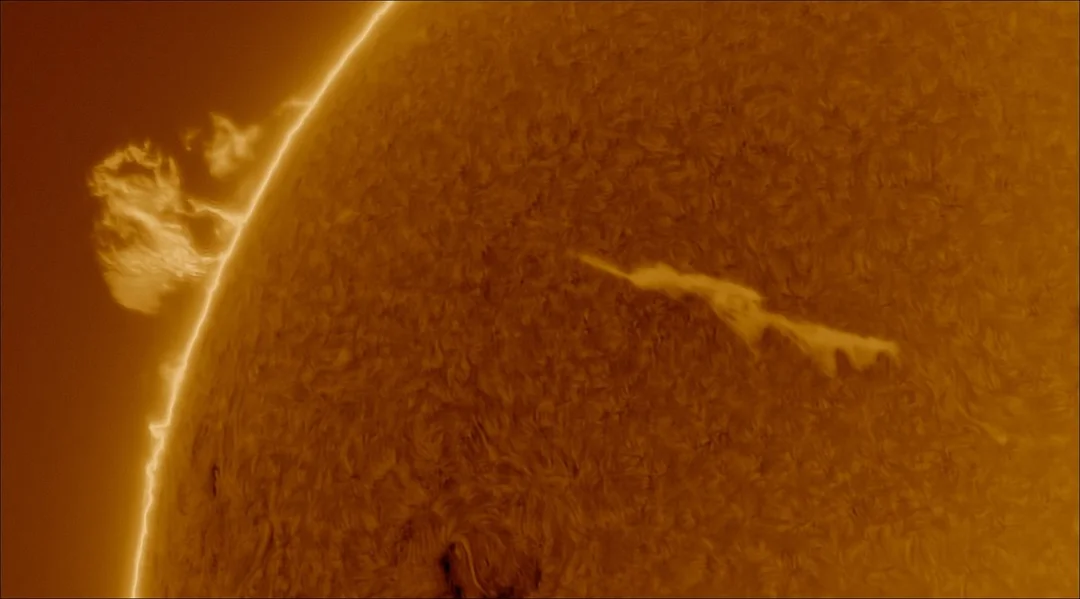
Solar Flare Frenzy: X2.7 Eruption Disrupts Communications, Sparks Aurora Watch
The sun has been putting on quite a show! Last week, a powerful X2.7-class solar flare erupted, the strongest of 2025, disrupting radio communications across five continents. While no major catastrophes occurred, this event is a potent reminder of the sun's power and its influence on our planet. But what exactly are solar flares, and should we be worried?
On Wednesday, May 14th, at approximately 08:25 UTC, NASA's Solar Dynamics Observatory captured the impressive X2.7 flare erupting from active region 4087 on the eastern edge of the sun. This eruption caused temporary radio communication blackouts on the sunlit side of Earth. Fortunately, according to NOAA, no severe consequences were reported.

Solar flares are explosive releases of energy caused by the rupture and reconnection of the sun's magnetic field lines. These events emit intense X-ray and gamma radiation, which can impact communications and navigation. They are often accompanied by coronal mass ejections (CMEs), massive clouds of solar particles that can trigger geomagnetic storms, auroras, and even affect satellites and power grids in extreme cases. While the CME associated with this flare is heading toward Mars, not Earth, the event still caused ripples here.
According to Spaceweather.com, shortwave radio blackouts were reported in parts of North America, South America, Southeast Asia, Africa, and the Middle East. Shawn Dahl from NOAA’s Space Weather Prediction Center noted that the X2.7 flare, which occurred as the sun was over the Middle East, likely contributed to disruptions of high-frequency radio signals in the region for about 10 minutes at the peak of the storm.
One of the more benign and beautiful consequences of solar activity is the increased possibility of seeing the Northern Lights (aurora borealis). When solar particles collide with Earth's atmosphere, they interact with oxygen and nitrogen, releasing energy as colorful lights. So, while communication systems might be affected, nature offers a stunning visual reward.
Scientists have indicated that the sun is currently in an active phase of its 11-year cycle, known as solar maximum. While this flare was the strongest of 2025, it was not the largest of the current cycle, which was an X9.0 eruption on October 3, 2024 which is just the start. As Lisa Upton, co-chair of NASA and NOAA’s Solar Cycle 25 Prediction Panel said, the period of solar decline can still see extreme solar events so expect more dazzling shows in the coming months.
This recent flurry of solar activity serves as a compelling reminder of the dynamic relationship between the sun and Earth. While the disruptions to communications are noteworthy, the possibility of witnessing spectacular auroras adds a touch of wonder to these cosmic events. Are you planning a trip to see the Northern Lights? Let us know in the comments below!
Related issues news
What is bird wing solar eruption?
New solar phenomenon witnessed NASA 's observation satellites captured this epic moment where the superheated plasma tore away from the sun in sweeping 'wings'. Even though all of this happened at a huge distance away from Earth, astronomers believe that this phenomenon could affect Earth.
Is there a solar storm in 2025?
The sun just spat out the strongest solar flares of 2025 — and more could be headed toward Earth. The sun has released several powerful M- and X-class solar flares over the past few days, resulting in radio blackouts around the world.
What causes solar flares?
Solar flares are huge explosions of electromagnetic radiation from the Sun. A flare appears as a sudden, intense brightening of a region on the Sun, lasting several minutes to hours. Flares occur when intense magnetic fields on the Sun become too tangled.
Is a solar flare going to hit Earth in 2025?
The X2.7 flare, though at the lower end of the X-class, triggered significant shortwave radio blackouts across five continents. Hours after the X2.7 flare on May 14, 2025, sunspot region AR4087 erupted again with a potent M5.3-class flare. By 7:20 a.m. ET on May 15, it unleashed another, an M7.74-class flare.